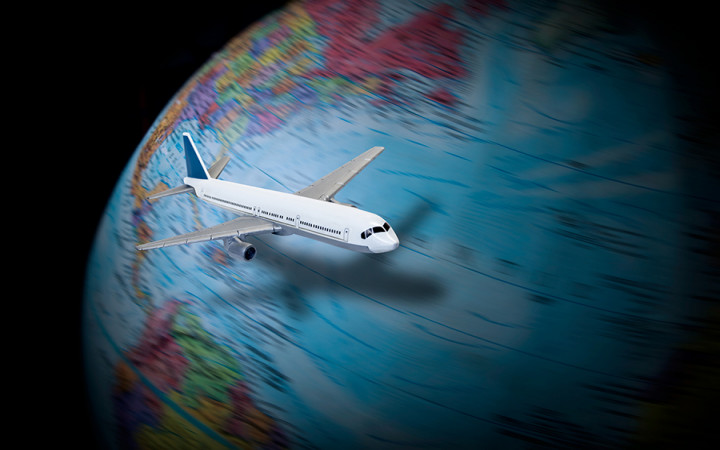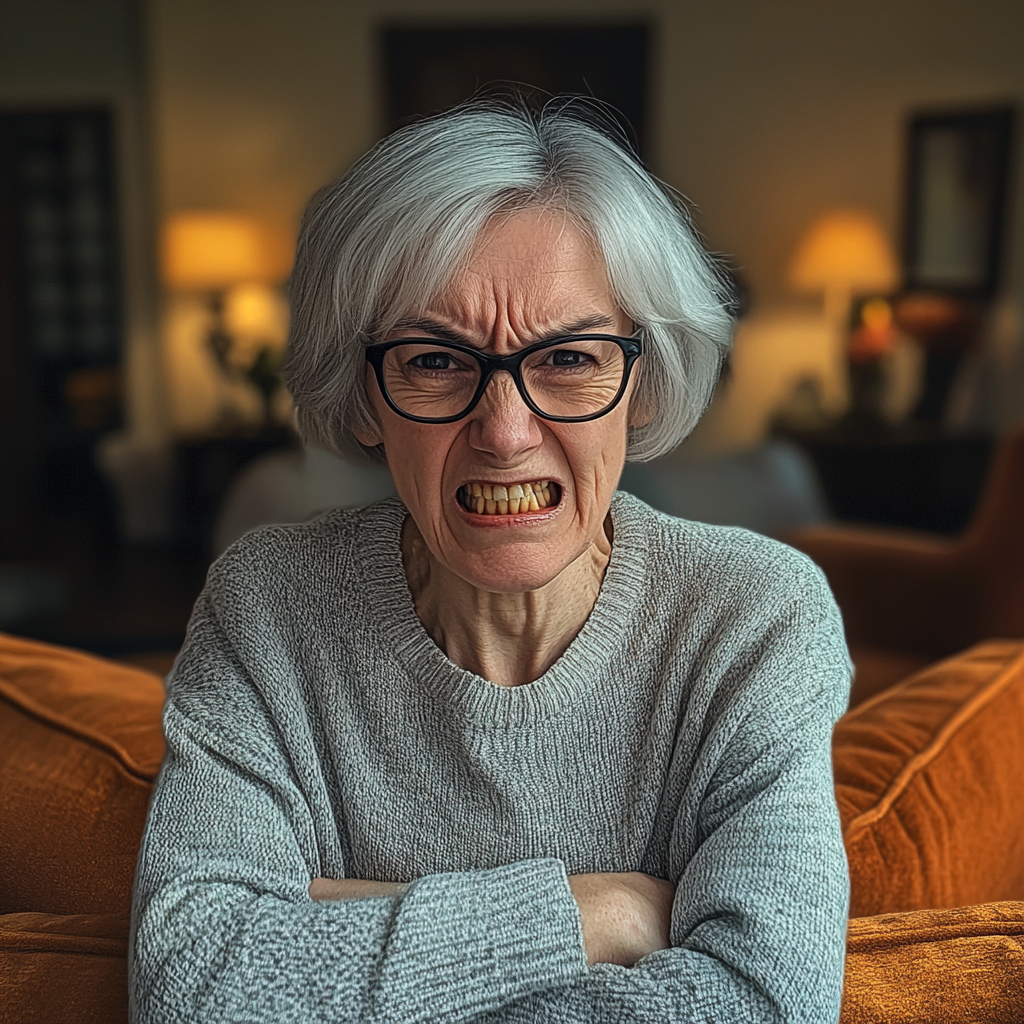Have you ever looked at a flight path on a map and wondered why airplanes take curved routes instead of flying in a straight line? Wouldn’t flying in a direct line be more fuel-efficient and faster? At first glance, it seems logical that a shorter distance would result in less fuel consumption, but in reality, aviation is far more complex.
Several factors determine flight paths, including the Earth’s shape, jet streams, weather conditions, and air traffic regulations. Let’s break down why airplanes rarely fly in a straight line and how their curved paths actually make flights more efficient.
The Earth’s Shape and the Great Circle Route

One of the biggest reasons airplanes don’t fly in a straight line is the Earth’s curvature. While we often view flight maps as flat, the Earth is a sphere, and the shortest path between two points is actually an arc called the Great Circle Route.
If you take a globe and use a string to connect two distant locations, you’ll notice that the shortest route often curves rather than follows a straight path. This is why flights from New York to Tokyo pass over the Arctic region rather than flying directly west across the Pacific Ocean.
Using the Great Circle Route helps planes save both time and fuel, even though it appears curved on a flat map.
Jet Streams and Weather Conditions Impact Flight Paths
Another key factor affecting airplane routes is jet streams—high-altitude wind currents that move at speeds of up to 200 mph (320 km/h). Pilots strategically plan routes to take advantage of these strong winds when possible.
Video : Why Airplanes Don’t Fly Straight
Flying with jet streams allows an airplane to get an extra push, helping it move faster while burning less fuel. Flying against a jet stream can slow down the plane significantly, increasing fuel consumption. Pilots often adjust routes to avoid strong headwinds, even if it means flying a longer distance.
Additionally, storms, turbulence, and severe weather conditions also play a role in determining flight paths. Airplanes may adjust mid-flight to bypass dangerous weather zones, thunderstorms, or areas with extreme turbulence.
Air Traffic Control and Flight Regulations
Air traffic isn’t a free-for-all where planes can just fly wherever they want. There are strict regulations set by aviation authorities and air traffic control (ATC) that dictate flight routes.
Some of these rules include restricted airspace, where certain areas, such as military zones, national security locations, and political zones, prohibit commercial flights from entering. Predefined flight corridors exist to avoid mid-air collisions, ensuring flights follow established air traffic lanes. Major airports handle hundreds of flights daily, so ATC ensures safe and efficient arrivals and departures.
Due to these regulations, airplanes cannot always take the most direct path and must follow designated routes instead.
Avoiding Air Turbulence for Passenger Comfort
Turbulence can make a flight uncomfortable, and pilots actively adjust routes to minimize rough air conditions. There are different types of turbulence, including thermal turbulence caused by warm air rising from the ground. Flying at higher altitudes helps avoid this.

Mechanical turbulence happens near mountains and rough terrains where wind patterns shift unpredictably. Clear-Air Turbulence (CAT) is sudden, strong air currents in high altitudes that are difficult to predict.
To ensure a smoother ride for passengers, pilots may deviate from the shortest path to avoid these turbulent areas.
Why Do Airplanes Sometimes Ascend Before Landing?
If you’ve ever been on a flight where the plane suddenly climbs just before landing, you might have felt a bit concerned. This maneuver is known as a go-around and is actually a common and safe aviation practice.
Some reasons why pilots perform a go-around include runway clearance issues. If another plane hasn’t cleared the runway in time, pilots must abort the landing and circle back. Poor weather conditions, such as poor visibility, strong crosswinds, or sudden gusts, can make a landing unsafe. If a plane is too fast, too high, or not properly aligned with the runway, the pilot will ascend and try again for a safer landing.
Go-arounds are standard procedures in aviation and ensure passenger safety above all else.
The World’s Longest Non-Stop Flight
While most flights follow curved paths, some routes push the limits of non-stop travel. The longest direct commercial flight in the world is from Singapore to Newark, New Jersey, USA.
This flight covers a distance of 10,400 miles (16,700 km) and takes approximately 18 hours and 45 minutes. It follows a carefully optimized path to balance fuel efficiency, wind conditions, and passenger comfort.
Video : Does Earth’s Rotation affect the Airplanes Speed & Flight Time
What Happens If a Plane Suddenly Loses Cabin Pressure?
A sudden drop in cabin pressure is often portrayed as a dramatic event in movies, but in reality, pilots are well-trained to handle it calmly.
When this happens, oxygen masks automatically deploy, and passengers should put them on immediately and breathe normally. The plane will descend to a safe altitude where oxygen levels are sufficient for breathing. The flight crew will assess the situation and communicate with passengers.
Losing cabin pressure doesn’t mean the plane will crash—pilots follow strict safety protocols to handle such incidents efficiently.
Final Thoughts: Why Curved Flight Paths Are More Efficient
While it may seem counterintuitive, airplanes take curved routes instead of straight lines to optimize flight efficiency, fuel usage, and passenger safety. Factors such as the Earth’s shape, jet streams, air traffic control, and weather conditions all play a crucial role in determining flight paths.
So next time you’re on a plane and see the route map displaying a curved flight path, remember there’s a lot of science and planning behind it to ensure you reach your destination as safely and efficiently as possible.
Eu me apaixonei pelo vizinho rabugento da minha nora, mas o Dia de Ação de Graças expôs a terrível verdade sobre nosso relacionamento – História do dia

Morar com meu filho e sua esposa insuportável estava longe do arranjo pacífico que eu havia imaginado. Mas quando o vizinho rabugento do lado inesperadamente me convidou para jantar, tudo começou a mudar. Mal sabia eu, um plano secreto estava se desenrolando — um que viraria minha vida de cabeça para baixo.
Eu estava morando com meu filho Andrew e sua esposa sempre ressentida, Kate, por duas semanas. Não era um arranjo que nenhum deles queria, mas meu ferimento acidental e um pouco exagerado na perna finalmente forçou o consentimento relutante de Kate.

Apenas para fins ilustrativos. | Fonte: Midjourney
Ela se opôs, é claro — já fazia anos — mas, dessa vez, não tinha escolha.
Saindo para a varanda naquela manhã, avistei-a no quintal, juntando folhas. Observando-a de longe, suspirei. A pobre garota não tinha a menor ideia do que estava fazendo.
“Kate, você está fazendo tudo errado!”, gritei, levantando a voz. Ela nem olhou para cima.

Apenas para fins ilustrativos. | Fonte: Midjourney
Presumi que ela não tinha ouvido, então me aproximei, estremecendo para causar efeito. “Estou lhe dizendo, você está juntando-os do jeito errado. Comece com pilhas pequenas e depois combine-as em uma grande pilha. Arrastá-los pelo quintal é perda de tempo.”
Ela parou abruptamente, apoiando-se no ancinho, e se virou para mim. Seu rosto traiu a exaustão de carregar uma criança e hospedar um hóspede indesejado.

Apenas para fins ilustrativos. | Fonte: Midjourney
“Achei que sua perna estivesse doendo”, ela disse sem rodeios, seu olhar se desviando para meu andar suspeitosamente firme. “Talvez seja hora de você ir para casa?”
Que coragem dela! Agarrando minha perna para dar ênfase, respondi indignado, “Eu estava tentando te ajudar, apesar da dor, e é assim que você me agradece?”
Kate descansou uma mão na barriga, o gesto protetor inconfundível. “Estou grávida de sete meses. Ajudar significaria realmente fazer algo útil,” ela disse, sua voz mais cortante que o ar do outono.

Apenas para fins ilustrativos. | Fonte: Midjourney
Rude, pensei, mas forcei um sorriso forçado. Ela não valia a pena o argumento.
Do outro lado da cerca, o Sr. Davis, seu vizinho mal-humorado, apareceu arrastando os pés, com sua carranca perpétua no rosto.
“Boa tarde, Sr. Davis!”, eu disse, tentando suavizar sua expressão dura. Ele resmungou algo baixinho e desapareceu em sua casa sem nem mesmo acenar. Assim como Kate — miserável e antissocial.

Apenas para fins ilustrativos. | Fonte: Midjourney
De volta para dentro, notei poeira nos móveis novamente. Kate estava em licença-maternidade — certamente, ela poderia reservar um tempo para limpar. Andrew merecia uma casa mais bem cuidada depois de todo seu trabalho duro.
Mais tarde, Kate voltou para casa e começou a preparar o jantar. Naturalmente, ofereci a ela algumas dicas úteis, mas meu conselho pareceu cair em ouvidos moucos. Eventualmente, ela se virou e disse friamente: “Por favor, saia da cozinha.”

Apenas para fins ilustrativos. | Fonte: Midjourney
Naquela noite, quando Andrew entrou pela porta, ouvi-a reclamando com ele. Inclinando-me perto da parede, peguei trechos da conversa deles.
“Nós discutimos isso”, Andrew disse, seu tom medido. “Vai beneficiar a todos.”
“Eu sei,” Kate respondeu com um suspiro cansado. “Eu já estou tentando, mas é mais difícil do que você pensa.”
Quando espiei pela esquina, vi Andrew abraçando-a, seus braços envoltos protetoramente em volta de sua barriga crescente. Ele a confortou como se ela fosse a vítima aqui!

Apenas para fins ilustrativos. | Fonte: Midjourney
No jantar, não resisti e comentei que a torta dela estava malpassada.
“Eu tenho uma ideia,” Kate disse de repente, seu tom alegre demais para ser genuíno. “Por que você não assa uma torta e leva para o Sr. Davis?”
Franzi o cenho. “Aquele rabugento? Ele nem me cumprimenta,” zombei, estreitando os olhos para ela.
“Acho que você está enganada. Ele não é tão ruim — só tímido”, ela disse, um sorriso cúmplice puxando seus lábios. “Além disso, eu vi o jeito que ele olha para você.”

Apenas para fins ilustrativos. | Fonte: Midjourney
Eu ri, o som foi oco. “Se isso for verdade, ele é quem deve dar o primeiro passo. Um homem deve cortejar uma dama.”
Kate suspirou e seu olhar se voltou para Andrew, que apertou sua mão como se estivesse compartilhando um segredo.
Na manhã seguinte, a última coisa que eu esperava era ver o Sr. Davis se aproximando do pátio.
“Margaret,” ele começou rigidamente, sua postura tão estranha quanto seu tom. “Você… bem… jantaria comigo?”

Apenas para fins ilustrativos. | Fonte: Midjourney
“Para você, é a Srta. Miller”, respondi, levantando uma sobrancelha.
Seus lábios se contraíram em frustração. “Tudo bem, Srta. Miller,” ele se corrigiu. “Você me permitiria convidá-la para jantar?”
“Eu permito”, eu disse, cruzando os braços. Ele assentiu brevemente e se virou para sair.
“É assim que você convida alguém?”, gritei para ele, observando-o congelar no meio do caminho. “Quando? Onde?”

Apenas para fins ilustrativos. | Fonte: Midjourney
“Hoje às sete. Minha casa”, ele disse sem se virar.
O resto do dia foi uma correria de preparação. Às sete em ponto, eu estava na porta dele, meu coração inesperadamente palpitando. Quando ele abriu a porta, sua expressão estava tão sombria quanto sempre.
Lá dentro, ele gesticulou para que eu me sentasse à mesa. Nem mesmo uma cadeira puxada para fora — algum cavalheiro.

Apenas para fins ilustrativos. | Fonte: Midjourney
Durante o jantar, a conversa foi afetada até que mencionei meu amor por jazz. Seu rosto se transformou, sua melancolia habitual substituída por um entusiasmo juvenil.
“Eu tocaria meu disco favorito para você,” ele disse, sua voz mais suave agora. “E eu até te convidaria para dançar, mas meu toca-discos quebrou.”
“Você não precisa de música para dançar”, eu disse, me surpreendendo.
Para meu espanto, ele se levantou e estendeu a mão. Enquanto balançávamos na luz fraca, ele cantarolou uma melodia familiar, uma que eu não ouvia há anos. Algo dentro de mim se suavizou e, pela primeira vez em eras, não me senti sozinha.

Apenas para fins ilustrativos. | Fonte: Midjourney
Depois, virei-me para ele. “Sr. Davis, está ficando tarde. Eu deveria ir para casa.”
Ele assentiu silenciosamente, retornando ao seu comportamento reservado habitual, e me acompanhou até a porta.
Antes de eu sair, ele hesitou. “Você pode me chamar de Peter,” ele disse, sua voz mais suave do que eu já tinha ouvido.
“E você pode me chamar de Margaret”, respondi sorrindo.

Apenas para fins ilustrativos. | Fonte: Midjourney
Então, para minha surpresa, ele se inclinou. Por um momento, fiquei congelada, incerta, mas quando seus lábios roçaram os meus, percebi que não queria me afastar.
O beijo foi gentil e hesitante, mas despertou algo que eu não sentia há anos.
Quando ele se afastou, ele procurou meu rosto por uma reação. Eu simplesmente sorri, meu coração mais leve do que esteve em eras.
“Boa noite, Peter,” eu disse suavemente, saindo. O ar frio da noite encontrou minhas bochechas coradas, mas o sorriso permaneceu em meu rosto durante todo o caminho para casa — e muito depois.

Apenas para fins ilustrativos. | Fonte: Midjourney
Peter se tornou uma parte insubstituível dos meus dias. Passávamos horas juntos, rindo das fofocas da vizinhança, lendo livros de sua vasta coleção e experimentando novas receitas.
Enquanto eu cozinhava, ele cantarolava minhas músicas favoritas, enchendo a casa de calor.
Encontrei uma alegria que não conhecia há anos, um contentamento tranquilo que fez todo o resto desaparecer.
Os comentários ásperos de Kate não me incomodavam mais; meu mundo girava em torno de Peter.

Apenas para fins ilustrativos. | Fonte: Midjourney
No Dia de Ação de Graças, convidei-o para jantar para que ele não passasse o dia sozinho. Notei que ele estava entrando na cozinha para falar com Kate. Curioso, segui.
“Kate, eu queria falar com você sobre o toca-discos”, disse Peter, com a voz hesitante, mas firme.
“Sr. Davis, eu já pedi. Vai chegar em breve. Você não tem ideia de como sou grata”, Kate respondeu com uma pitada de alívio. “Você tornou minha vida muito mais fácil. Não sei como você a aguentou, mas em breve o toca-discos será seu. Obrigada por concordar com toda essa farsa.”

Apenas para fins ilustrativos. | Fonte: Midjourney
As palavras me atingiram como um tapa. Um toca-discos? Me aturando? Uma farsa? A realização queimou através de mim enquanto a raiva aumentava.
“Então, isso tudo era um jogo?!” Eu irrompi na cozinha, minha voz tremendo de fúria.
Kate congelou, seu rosto pálido. “Oh…” foi tudo o que ela conseguiu dizer.
“Você se importa em explicar?!” eu gritei, meu olhar indo de um lado para o outro entre ela e Peter.
Andrew entrou correndo, com a testa franzida em preocupação. “O que está acontecendo?”

Apenas para fins ilustrativos. | Fonte: Midjourney
“Sua esposa armou um esquema contra mim!”, exclamei, apontando um dedo acusador para Kate.
Andrew suspirou profundamente. Era como se estivesse se preparando para uma tempestade. “Mãe, não foi só ela. Foi ideia minha também. Achamos que você e o Sr. Davis poderiam fazer um ao outro felizes. Nenhum de vocês teria dado o primeiro passo, então demos a ele um pouco de… encorajamento.”
“Incentivo?”, repeti, elevando a voz.

Apenas para fins ilustrativos. | Fonte: Midjourney
“Nós oferecemos a ele um toca-discos,” Andrew admitiu, seu tom comedido, mas culpado. “Em troca de sair com você.”
“Andrew, por quê?” Kate sussurrou.
“Pelo menos meu filho é honesto comigo!” Eu retruquei, cruzando os braços.

Apenas para fins ilustrativos. | Fonte: Midjourney
“Seu filho também estava no limite com você!” Kate retrucou, sua voz tingida de frustração. “Você estava constantemente interferindo em nossas vidas, criticando cada pequena coisa que eu fazia. E eu estou grávida do seu neto — eu não conseguia lidar com o estresse! Então sim, nós bolamos esse plano, e funcionou perfeitamente. Você finalmente tinha algo para fazer, e eu tive uma folga!”
Suas palavras pairaram no ar, ardendo mais do que eu queria admitir. Balancei a cabeça, a descrença percorrendo meu corpo. “Sabe de uma coisa, Peter? Eu poderia ter esperado isso dela. Mas não de você.”

Apenas para fins ilustrativos. | Fonte: Midjourney
“Margaret, eu posso explicar…” Peter começou, dando um passo em minha direção.
Mas eu estava bravo demais para ouvir. Saí furioso de casa, meu antigo ferimento na perna me lembrando de sua presença a cada passo.
“Margaret!” Peter me chamou. “Margaret, espere!”
Girando, olhei para ele. “O quê?! O que você poderia dizer? Estou velho demais para esses jogos!”

Apenas para fins ilustrativos. | Fonte: Midjourney
Ele parou, seu rosto nublado de arrependimento. “Eu disse a Kate que não precisava do toca-discos dela! Que eu só queria ficar com você!” ele gritou, sua voz rouca de emoção.
“Isso não muda o fato de que você concordou no começo”, retruquei, com a voz trêmula.

Apenas para fins ilustrativos. | Fonte: Midjourney
“Porque você era horrível!” Peter retrucou, então suavizou. “Ou pelo menos era o que eu pensava. Ouvi como você constantemente pegava no pé de Kate, sempre dizendo a ela o que fazer. Mas a verdade é que eu não era melhor — rabugento, fechado e amargo. Você me mudou, Margaret. Você me fez sentir vivo novamente. Você me lembrou como encontrar alegria nas pequenas coisas.”
Hesitei, suas palavras perfurando minha raiva. “Por que eu deveria acreditar em você?”, perguntei, minha voz mais baixa agora.

Apenas para fins ilustrativos. | Fonte: Midjourney
Peter se aproximou, seu olhar firme. “Porque eu me apaixonei por você, Margaret. Pela mulher meticulosa, mandona e sempre certa que também se importa profundamente, que cozinha refeições que parecem um lar e que sabe todas as minhas músicas favoritas de cor. Eu te amo — todas vocês.”
Lágrimas brotaram em meus olhos, sua confissão me abalou até o âmago. A verdade era inegável — eu também tinha me apaixonado por ele. Não importava o quão furiosa eu estivesse, meus sentimentos não me deixariam ir embora.

Apenas para fins ilustrativos. | Fonte: Midjourney
Ele estendeu a mão, gentilmente enxugando uma lágrima da minha bochecha. “Sinto muito por machucar você. Por favor, me dê uma segunda chance.”
Eu assenti lentamente, deixando a tensão diminuir. “Tudo bem”, eu disse, minha voz suavizando. “Mas você está escondendo esse toca-discos da Kate. Vamos precisar dele para nossa música.” Peter riu, alívio e alegria lavando seu rosto.
Daquele Dia de Ação de Graças em diante, Peter e eu nos tornamos inseparáveis. A cada ano, celebrávamos o feriado com música tocando naquele toca-discos, nosso amor ficando mais forte a cada melodia.

Apenas para fins ilustrativos. | Fonte: Midjourney
Diga-nos o que você acha dessa história e compartilhe com seus amigos. Pode inspirá-los e alegrar o dia deles.



Leave a Reply